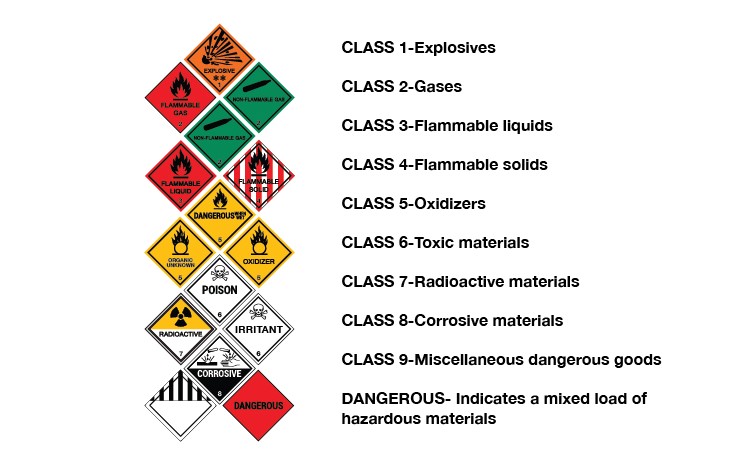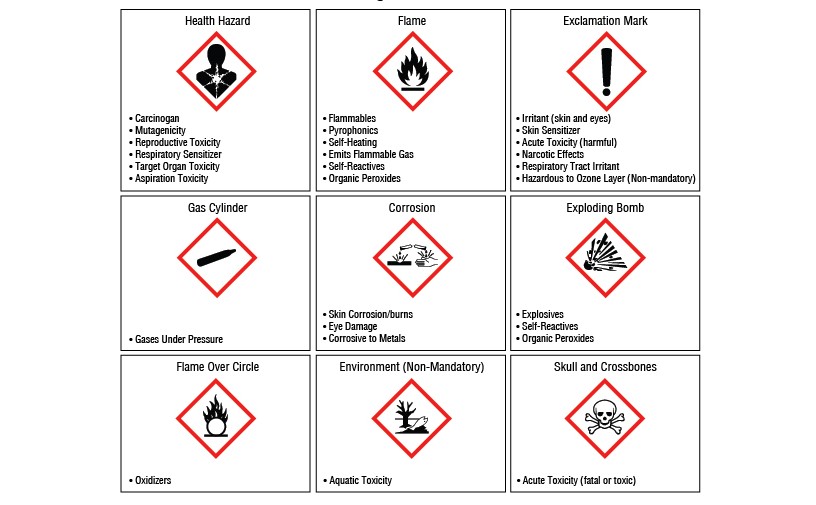Be your Logistics Department in China
Customized logistics solutions, your logistics expert in China
Customized logistics solutions, Shipping from China to the World
Tel:+8613424475220 Email:info@viputrans.com 
What are the 9 types of dangerous goods in international logistics?
There are 1-9 categories of dangerous goods, and each category of dangerous goods has a corresponding pattern mark of dangerous goods. It is also easy to distinguish the goods in this way, and it is also helpful for the transportation of goods.
Dangerous goods are specifically divided into 9 categories:
Class I: explosives (ignoring 1.4 fireworks);
Class II: compressed gas;
Class III: Flammable liquids;
Class IV: flammable solids, flammable articles and wet flammable articles;
Class V: Oxidizing agents and organic oxides;
Class VI: poisonous and infectious substances;
Class VII: radioactivity (neglect);
Class VIII: corrosive;
Class IX:Miscellaneous
.

Class 1Explosives. Under the action of the outside world (such as heat, pressure, impact, etc.), such chemicals can undergo violent chemical reactions, generate a large amount of gas and heat instantaneously, cause the surrounding pressure to rise sharply, explode, and cause damage to the surrounding environment.
During the transportation of such dangerous goods, it is necessary to ensure that the goods are stored in a dry and cool environment, and they must be fixed to prevent shaking and impact.
( There are basically only three ports in China: Taicang, Shanghai, and Fangcheng Port. )
Class 2Compressed and liquefied gases. When such chemicals are heated, impacted or strongly shaken, the pressure in the container will increase sharply, causing the container to burst and explode, or cause the valve of the gas cylinder to loosen and leak, causing fire or poisoning accidents, such as liquefied gas filling.
When transporting compressed gas and liquid, the pressure containers of the stored products must be fixed with special shelves to prevent shaking, and the tightness of the container valves should be checked frequently to prevent accidents.
Therefore, the second category: compressed gas, every gas must be the second category, but some people will ask how to explain the solid powder in the fire extinguisher, because the dry powder fire extinguisher is also compressed by gas.
2.1 Flammable (typically lighter); 2.2 Non-flammable (fire extinguisher, nitrogen); 2.3 Toxic (sulfur dioxide). Every gas must be compressed, and compression means that the pressure vessel must be dangerous.
Type 2 basically requires a boiler inspection certificate, except for a few, such as a lighter in a wooden box, which requires a dangerous package certificate. The lighter is special. In addition, the factory needs to provide the air leakage inspection qualification, which is approved by the shipping company.
Class 3Flammable liquids. Class chemicals are liquids, liquid mixtures or liquids containing solid substances with a closed-cup flash point ≤ 61°C, but excluding liquids whose hazards have been listed in other classes. Such substances are volatile at room temperature, and their vapors can form explosive mixtures when mixed with air. When transporting flammable liquids, attention must be paid to the sealed environment to prevent the danger of liquid evaporation.
Class 4Flammable solids, spontaneous combustion chemicals and chemicals flammable when wet. This type of chemical refers to a chemical that undergoes a violent chemical reaction when exposed to water or moisture, releasing a large amount of flammable gas and heat. Some of them can burn or explode without an open flame.
Such products should be stored in a dry and cool environment for transportation.
After investigation: four categories: flammable solid, 4.1 is flammable, 4.2 is natural, 4.3 is releasing flammable gas when it meets water. Among the 4 types, the white powder is more annoying, and the inspection rate is relatively high. There are several types of gases in the 4 categories that you should not touch: 4.2 urea dioxide, 4.3 categories are super dangerous, and almost all shipping companies do not accept them.
Class 5Oxidizing agents and organic peroxides. This type of dangerous goods refers to substances that are in a high oxidation state, have strong oxidizing properties, and are easy to decompose and release oxygen and heat. Including organic substances containing peroxygen, which are not necessarily flammable by themselves, but can cause the combustion of combustibles, and can form explosive mixtures with soft powdery combustibles, which are sensitive to heat, shock or friction.
When transporting Class 5 dangerous goods, it is necessary to pay attention to the goods must be fixed to prevent shaking during transportation and accidents on the one hand.
Five categories: Oxide (can only be used in the whole cabinet), 5.1 Peroxide (there are not many shipping companies that can be connected, such as msk, mcc, msc), 5.2 Super dangerous (especially dangerous goods can often react by themselves) , For example, in Shanghai’s Yangshan Port, 5.2-category cargo enters Yangshan to be used as a shuttle bus, and there are 5.2 and 2.1 tanks for the shuttle bus.
Class 6Drugs. The goods in this item refer to the goods that enter the human body and accumulate to a certain amount, which can produce biochemical or biophysical changes with body fluids and tissues, disturb or destroy the normal physiological functions of the human body, cause temporary or persistent pathological conditions, and even life-threatening items. The transportation of toxic and harmful dangerous goods must be sealed and safe to prevent the toxic and harmful liquid from evaporating and being inhaled by people.
Six categories: toxic and infectious items, 6.1 toxic (low toxicity, moderate toxicity, high toxicity, and high toxicity), 6.2 unacceptable (You cannot find a shipping company to pick up the 6.2 and 7 categories).
Class 7Radioactive chemicals. Chemicals refer to chemicals with specific activity greater than 74×104Bq/kg. Such as: thorium nitrate, luminous powder, etc. Radioactive items, such as radium, uranium and other radioactive dangerous goods must be sealed when transported, and can only be transported after ensuring safety.
But if there is no shipping company to pick up, just give up.
Class 8
Corrosive products. These chemicals are corrosive. Solids or liquids that can burn human tissue and cause damage to objects such as metal. Visible necrosis occurs within 4 hours in contact with the skin, or a solid or liquid whose average annual corrosion rate on the surface of No. 20 steel exceeds 6.25mm/a at a temperature of 55°C. When transporting such items, most of them are packed in glass jars, so be sure to handle them with care and fix them securely.
The eight categories are divided into 8.1, 8.2 and 8.3 according to the pH value and divided into acids and alkalis (also 8 types of dangerous goods, acids and alkalis cannot be packed in the same container and need to be isolated)
Class 9Miscellaneous. This kind of dangerous goods are magnetic items, with anesthesia, poison or other similar properties, which can cause emotional irritability or discomfort to the flight crew, so as to affect the correct execution of flight tasks and endanger flight safety.
Such items must be degaussed and sealed during transportation.

According to the degree of harm, the strength requirements for dangerous goods packaging in my country are also different, which can be roughly divided into three categories:
Class I packaging is suitable for the category where the goods are extremely dangerous and require high packaging strength;
Class II packaging is suitable for the category of goods with medium risk and high requirements for packaging strength;
Class III packaging is suitable for the category with less dangerous goods and general requirements for packaging strength;
The classification of the above three dangerous goods packaging categories is mainly determined according to the flash point of the goods. For example, explosives, flammable liquids, flammable solids, and other dangerous goods that have simple trigger conditions but great destructive power in the natural environment generally need to use Class I packaging, and it is necessary to prevent the possibility of accidents to a certain extent. .
If you are interested in exporting dangerous goods, you can always consult us.
Shawn.Liao(Mr.) ,E-MAIL:sales04@viputrans.com ;Phone/Wechat:+8618926970495;Whatsapp/Skype: +8613431563558
WCA Member ID No.129936
Copyright © 2003-2025 VIPU Supply Chain Logistics Co., Ltd. | All Rights Reserved
LOGISTICS | E-COMMERCIAL FULFILLMENT | ABOUT US | CASE | NEWS | VIDEO | CONTACT US
We will find the fastest or the cheapest way for your shipment. Please specify: where from, where to, what to ship.